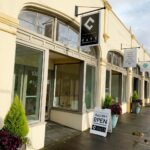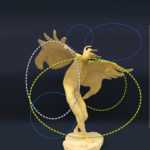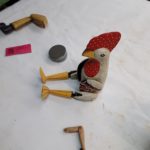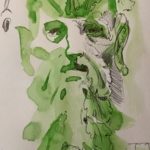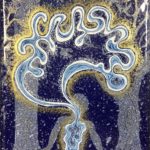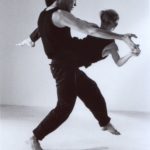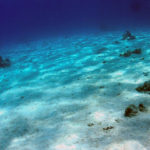April 5th – 5pm-9pm
Art At The Cave gallery
108 E Evergreen Blvd
Vancouver, WA 98660
34 PNWS Members, 60 Artworks
Sculpture process
Space is the Place
Reflections on Meditation and Sculpture Process Recently, my meditation practice expanded into my clay studio. There was a spontaneous notion to stop all action, pause every agenda, and sit in the middle of the floor. It was almost surprising how easy it was to do in that fairly busy place. There are hundreds of ceramic […]
Spatial Relations: Seeing 3D Form in the Void
Humans have a natural ability to see and recognize things. You see something and your brain immediately matches the image to a pattern you’ve seen before. You recognize the object. It’s 3D form. Comprehension is complete. Congratulations. You’ve recognized the object and completely missed the space – the invisible element of the image. Space is […]
Art Play Day at Murphy Sculpture Studio
I’ve wanted to do this since Carole first asked me to announce it. I finally made the third iteration and was not disappointed. What a hoot. Here’s the idea. On certain Wednesdays, (to be announced to members) Carole Murphy opens her sculpture studio and her immense collection of oddities for members to use as they […]
Sculpture Process: The Green Man from Sketch to Finished Sculpture
As a gardener, I’ve been cultivating plants for 60 years. As a sculptor, I’ve been researching the Green Man in books, museums, and churches. A current project which employs the sculpture process combines these interests into designs for a bronze fountain featuring the Green Man. My drawings confirmed an idea I’ve had that sculpture comes […]
“I am Leading this from What I Need as a Sculptor.”
Patrick Gracewood interviews sculptor, Alisa Looney PG. I’m curious about artists who combine different disciplines. We share a love of drawing, dance, and sculpture. I’d like to talk about process. When we are focused on “Making ART” it is easy to ignore our body’s needs. How do you care for your spirit’s needs as a […]
Dance with Me: Sculpture, Dance and Creative Collaboration
My comment, “Sculpture and dance are closely related, much like a creative collaboration” had left some people puzzled at a recent Pacific Northwest Sculptors member meeting. I see dance and sculpture as a continuum of movement and stillness, the ephemeral to the eternal. Almost everything we know of early civilizations comes from sculpture. Indeed, if […]
Art Inspiration – My Oracle…The Ocean
My sculpture medium is paper clay. It has a high water content and I have found that I can slam a slab of it against a “rock” that I set up in my studio and the effect is very like what I observe at the beach.
